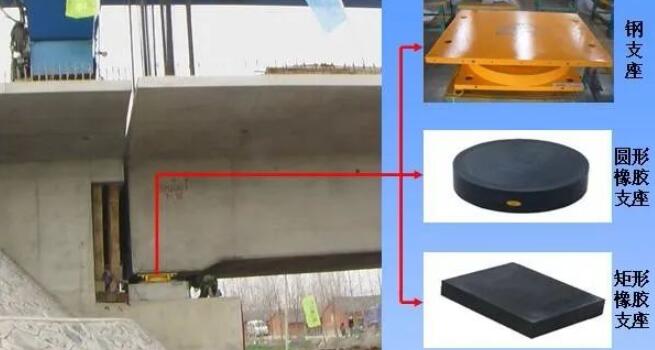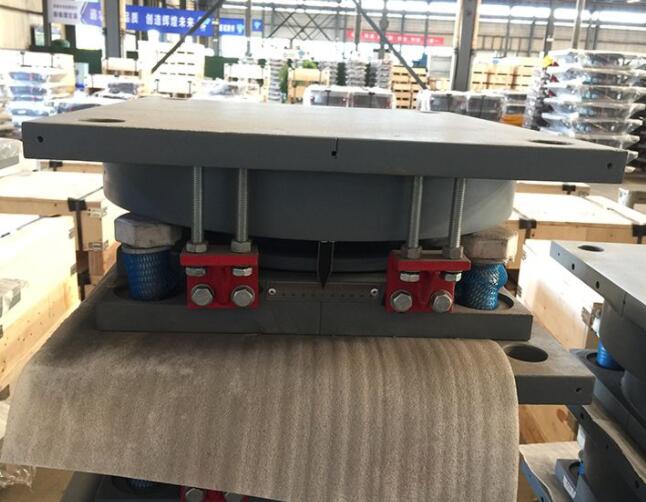Bridge rubber bearing design selection, construction and installation is to ensure that the bearing play a normal role in the important link. From the bridge bearing disease statistics, bearing design selection, construction and installation is one of the main reasons for the early destruction of the bearing.

The safety and durability of the bridge structure is highly valued in the design of the structure, but often ignored in the selection of bearings. The impact of the bearing on the structure has not been enough attention. General bearings are set according to standardization, while some bridges require bearing capacity of bearings, the actual selection of bridge rubber bearings bearing capacity can not meet the requirements; at present, the number of spans per continuous beam in about 5 spans, the total joint length is generally more than 100 m, some even more than 200 m, usually rubber bearings according to the calculation of fixed bearing force, if not selected or reasonably set slide bearing, coupled with the bearing thin, bearing shear spring mode too The combination of unfavorable factors such as large, may not be able to meet the deformation requirements of the structure, and ultimately lead to additional internal force increase, bearing shear durability is reduced, the pier horizontal thrust increased; mountain bridges due to the longitudinal slope and the use of a large number of ball crown bearing and caused off-air, bias pressure, etc.; continuous structure of large span curved bridges and other complex bridges selected plate rubber bearing, resulting in uneven forces, and even have upward pullout force; earthquake The choice of bearing in the area does not take into account the need for seismic. Therefore, the bridge design should pay attention to the mechanical calculation of the bearing, combined with the bridge structure on the bearing reaction force, displacement, shear and corner requirements for combination calculation, determine the most unfavorable combination, and combined with the bridge longitudinal and transverse sections, seismic requirements and economic reasonable selection of bridge rubber bearings or adjustment of the bridge structure. Bearing reaction force greater than 3 000 kN should consider the choice of basin type bearing, especially curved bridge, because the plate bearing is sometimes more difficult to adapt to the force needs of curved bridge, span larger and smaller radius of continuous curved beam bridge should not choose plate bearing, and bearing layout to take into account the influence of super high on the bearing; because the plate rubber bearing allowable horizontal displacement is small, the joint length is larger when the joint end should be equipped with additional slide plate bearing, or increase Bridge rubber bearing thickness; ball crown rubber bearing is a new type of bearing, can adapt to the needs of the bridge large longitudinal slope, but from the actual use of the effect, bias and dehollowing and other problems are more serious, should be carefully selected. Bridge rubber bearings play a key role in seismic and vibration damping, bridges in seismic zones should be combined with seismic requirements to choose lead-core bearings and other seismic type bearings.

The deployment of bridge rubber bearing is the last link to ensure the normal function of the bearing, due to the bearing and other hidden parts are difficult to test acceptance, so the bearing deployment and installation accuracy issues have been difficult to control. From the use of bridge inspection vehicle for a large number of investigations and testing, both old bridges or bridges under construction, plate rubber bearing off-air and off-position has become a common problem, bearing layout and installation of many abnormalities, bearing installation pass rate is very low.

(1) plate rubber bearing allowable shear modulus of 1.0 MPa, the maximum shear angle tangent value tgaGO. 7, therefore, try to choose the average annual temperature when the installation of the beam, so that the bearing in the initial normal force and deformation state, in order to reduce the initial additional force bearing, reduce the initial shear deformation of the bearing (excessive initial shear deformation will aggravate the rubber aging).
(2) in the plane to ensure that the bearing installation in place, especially for curved bridges and single-supported continuous structure, bearing offset not only make the bearing in the bias state, and will cause greater structural force changes, may lead to beam cracking when serious, such accidents are not uncommon.
(3) take to adjust the height of the pad stone, welding steel plate, etc. to make the bearing in the horizontal state, to prevent the bearing off the air, to ensure that the bearing and the beam body force balance. For the oblique angle of the larger beam bridge, obtuse angle end bearing pressure is significantly greater than the acute end, more should be prevented from bearing out of the air.
(4) slide bearing installation should consider the influence of the longitudinal slope of the bridge, generally should be set in the uphill end, in order to avoid the beam to the downhill end of the climb.
The above is our summary of the bridge rubber bearing in the selection and installation of the problem, if you have any questions, please feel free to contact us.